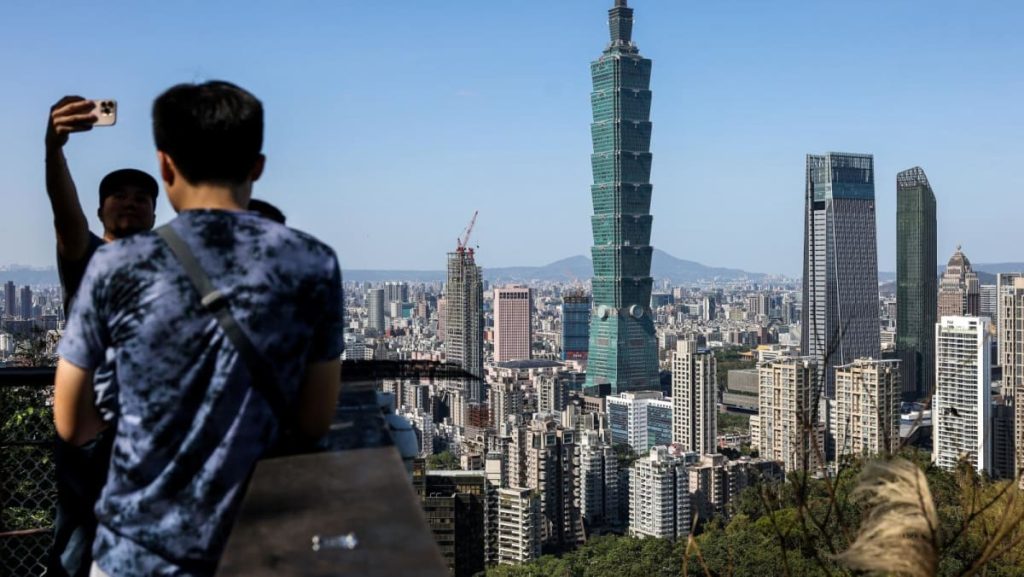The indefinite suspension of group tours from Taiwan to mainland China has created a significant economic strain on Taiwanese tour operators, the vast majority of whom specialize in organizing these cross-strait excursions. This predicament exacerbates the already challenging economic landscape for the Taiwanese tourism sector, which has been struggling to recover in the post-pandemic era. While individual Taiwanese travelers are increasingly venturing to mainland China, the absence of organized group tours represents a substantial loss of revenue and potential growth for the industry. The Taiwanese government had planned to lift the COVID-19-era restriction on group tours to the mainland in March but ultimately shelved the plan, citing a lack of reciprocal action from Beijing. This decision further underscores the complexities and sensitivities that characterize the cross-strait relationship and its impact on various sectors, including tourism.
Despite the political impasse surrounding group tours, data reveals a surge in individual Taiwanese traveling to mainland China. This increase is attributed to several factors, including streamlined visa processes and attractive incentives offered by mainland authorities, such as discounted or complimentary access to prominent tourist destinations. These initiatives reflect a deliberate effort by Beijing to foster closer ties with Taiwan through increased people-to-people exchanges. While this rise in individual travel offers a glimmer of hope for improved cross-strait relations, it doesn’t fully compensate for the economic losses incurred by the suspension of group tours, which represent a significant portion of the Taiwanese tourism industry’s business. The current situation underscores the delicate balancing act between political considerations and economic realities in the cross-strait context.
The imbalance in cross-strait tourism flows is further complicated by Taiwan’s widening travel deficit. More Taiwanese citizens are traveling abroad than international visitors are coming to Taiwan, creating a significant gap. This deficit is projected to reach record levels, with an estimated 10 million more outbound Taiwanese travelers compared to inbound international visitors. This imbalance translates into a substantial economic loss, further emphasizing the importance of revitalizing Taiwan’s tourism sector. Opening the door to mainland Chinese tourists could help mitigate this deficit and inject much-needed capital into the Taiwanese economy. However, this potential solution is not without its caveats and requires careful consideration of the long-term implications.
While welcoming mainland Chinese tourists offers a seemingly straightforward solution to Taiwan’s tourism woes, experts caution against over-reliance on this single market. Past experiences have shown that mainland Chinese tourism to Taiwan has often been subject to stringent regulations and controls. These controls often include requirements for tourists to book through designated operators and adhere to pre-determined itineraries, limiting the economic benefits to a select few businesses rather than distributing them more broadly across the Taiwanese tourism sector. This concentrated benefit structure raises concerns about equitable economic growth and the potential for market manipulation. Furthermore, the unilateral control that Chinese authorities wield over tourist flows creates a precarious situation for the Taiwanese tourism industry, leaving it vulnerable to sudden policy shifts and potential economic disruption.
The potential benefits of increased mainland Chinese tourism must be weighed against the risks of over-dependence and potential political manipulation. The history of cross-strait relations demonstrates the susceptibility of tourism flows to political pressures, making it a somewhat unreliable source of sustained economic growth. Diversifying Taiwan’s tourism market and attracting visitors from a wider range of countries would create a more resilient and stable tourism sector, less vulnerable to political fluctuations. Investing in marketing and promotion targeting other regions, developing unique tourism products and experiences, and improving infrastructure can all contribute to broadening Taiwan’s appeal and reducing its reliance on any single market.
Ultimately, navigating the complexities of cross-strait tourism requires a strategic and balanced approach. While the economic benefits of increased mainland Chinese tourism are undeniable, Taiwan must prioritize long-term sustainability and resilience. This involves diversifying its tourism market, fostering healthy competition within the industry, and mitigating the risks associated with over-reliance on a single, politically sensitive source of visitors. A robust and adaptable tourism sector will contribute to Taiwan’s overall economic stability and reduce its vulnerability to external pressures. Balancing the immediate economic gains with long-term strategic planning will be crucial for the sustainable development of Taiwan’s tourism industry.

